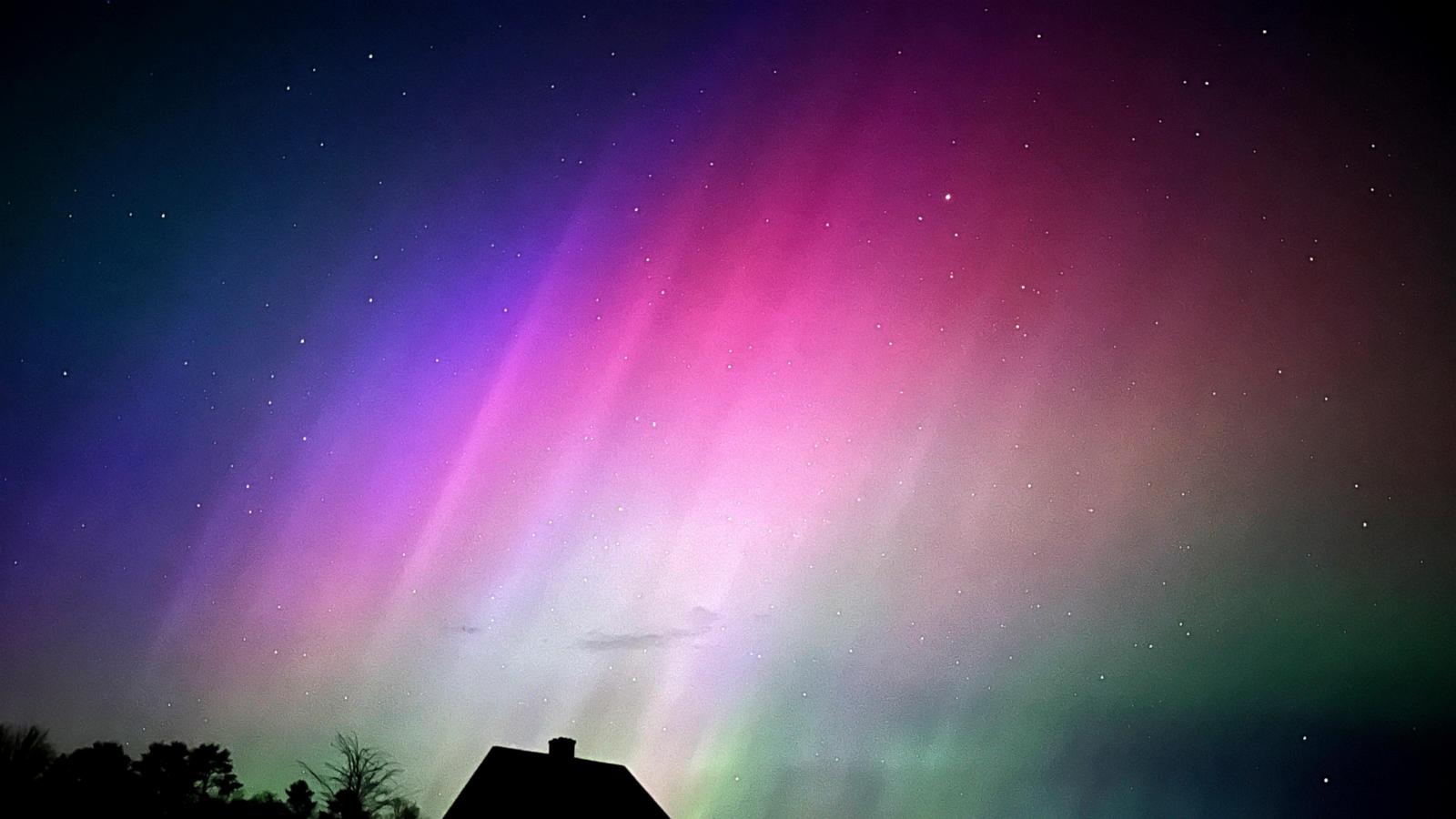Prepare for a Celestial Spectacle! Witness the Stunning Northern Lights Dance Across the US Sky!
Get ready for an unforgettable celestial show! This week, a double whammy of solar storms is expected to unleash a dazzling display of the aurora borealis, potentially visible across a large swathe of the United States. This is NOT a drill. Prepare to be amazed by the breathtaking beauty of nature's own light show. From the Northern plains to some parts of the East Coast, a phenomenal view may well be possible. Clear skies and a little patience could offer some fantastic photo opportunities. Don't miss this electrifying event!
When and Where to Catch the Northern Lights Show
The National Oceanic and Atmospheric Administration (NOAA) predicts that these incredible auroras will paint the night sky on Monday and Tuesday, with the best viewing opportunities during the early morning hours of Tuesday. The reason for these early morning showings lies in the interplay between darkness and the incoming solar plasma.
Prime Viewing Locations:
Expect optimal viewing conditions in these states: Alaska, Washington, Montana, North Dakota, South Dakota, Minnesota, Wisconsin, Michigan, New Hampshire, Vermont, and Maine. There's even a chance for lucky sightings in Oregon, Idaho, Wyoming, Iowa, and parts of New York. Mark your calendars!
How to Maximize Your Aurora Viewing Experience
- Escape the City Lights: Head away from urban areas to minimize light pollution, significantly enhancing the visibility of the auroras. Darker areas offer the best viewing experiences. Rural areas and national parks could be your ideal spot.
- Patience is Key: The auroras can be unpredictable, appearing suddenly or persisting for extended durations. Patience will be rewarded with the beauty of the event.
- Timing is Everything: The early morning hours, just before sunrise when it is dark, present the most promising viewing window.
- Check the Forecast: Continuously check for weather forecasts and aurora predictions from NOAA and dedicated aurora forecasting apps. Be updated on the possibilities as the storms approach.
Understanding the Science Behind the Celestial Show
The upcoming show isn't mere chance; it's a testament to the Sun's incredible power. We're currently in the solar maximum phase of the Sun's 11-year cycle—this means increased solar activity, resulting in more frequent and intense solar flares, coronal mass ejections, and ultimately, spectacular displays of aurora borealis. This elevated solar activity enhances our possibilities to witness some spectacular shows!
The Sun's Influence: Solar Storms and Auroras
The Sun's plasma bursts traveling towards Earth trigger geomagnetic storms. When these energized particles collide with Earth's atmosphere, the collisions excite atmospheric gases and cause those mesmerizing shimmering colors that we see in the sky. In essence, it's a spectacular cosmic light show triggered by the power of the Sun!
Predicting Solar Activity and Aurora Views
While scientists can't precisely forecast every aurora display, they closely monitor solar activity, making educated predictions. NOAA provides updated forecasts that are vital to determine whether a display of aurora activity is possible. Regular updates will ensure your viewing chances are optimized.
Past Encounters: Amazing Aurora Views in Unexpected Places
In recent months, surprisingly widespread aurora sightings have wowed onlookers. A rare severe geomagnetic storm in May brought displays to numerous locations, exceeding normal expectations. Furthermore, in October, even major cities saw the stunning Northern lights thanks to a very powerful storm. These rare events brought the stunning spectacle to unlikely places across the Northern Hemisphere—an excellent portent for viewing opportunities this week! This just goes to show that spectacular views of the auroras can be visible in many areas. These recent experiences further encourage you to keep your eyes to the skies!
Take Away Points
- Keep an eye on the sky between Monday and Tuesday night (particularly the early hours of Tuesday). You may be treated to the spectacular aurora show.
- Check NOAA for updates. Stay informed on the possibility of seeing the Northern Lights.
- If you can, find a viewing spot far away from urban lights. These light-polluted areas make it harder to see the auroras clearly. With some preparations and timing, you might be rewarded with this natural spectacle!




